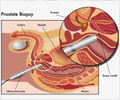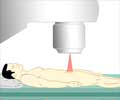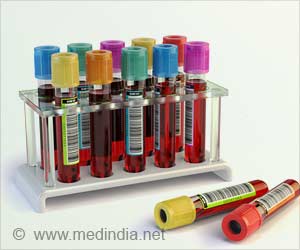A new study says that using a nomogram can help estimate individual risks that a screen-detected prostate cancer has been overdiagnosed.

Roman Gulati, M.S., from the Division of Public Health Sciences at the Fred Hutchinson Cancer Research Center in Seattle, WA, and colleagues developed the overdiagnosis nomogram to help patients and clinicians make informed treatment decisions about screen-detected prostate cancers. The authors used a microsimulation model to generate virtual life histories for a representative population of US men between 1975 and 2005. Men who develop cancer can be detected based on elevated PSA levels or development of symptoms. The model used prostate cancer incidence data from the Surveillance, Epidemiology, and End Results registry to estimate risks of prostate cancer progression and detection in the absence and presence of PSA screening. A prediction model was then developed to predict individual chances of overdiagnosis (i.e., the chance that other-cause death would precede diagnosis in the absence of PSA screening) given information known at screen detection. The prediction model estimates that the chances of overdiagnosis range from 2.9% to 88.1% depending on patient age, PSA, and Gleason score.
The authors write, "It is hoped that the resulting nomogram, tailored to individual patient characteristics known at diagnosis, will provide useful information for patients and their physicians seeking to weigh the likely harms and benefits of the treatment options available for contemporary screen-detected prostate cancers."
In an accompanying editorial, Boris Freidlin, Ph.D. and Edward L. Korn, Ph.D., from the Biometric Research Branch, Division of Cancer Treatment and Diagnosis at the National Cancer Institute in Bethesda, MD, the editorialists caution that each step of the modeling described in the study by Gulati et al makes "multiple unverifiable assumptions that can produce bias." They write that microsimulation could still be useful to increase generalizability of results from randomized trial results. However, Freidlin and Korn question whether the Gulati et al model of the risk of overdiagnosis is useful in guiding treatment decisions of patients with screen-detected prostate cancer: "…once an individual has been screened and found to have prostate cancer, the relevant question is the outcomes of various treatments (treatment morbidity, prostate cancer symptoms and death), and not the probability of an event [detection of prostate cancer] that could have happened if the individual had not been screened."
Source-Eurekalert

![Prostate Specific Antigen [PSA] & Prostate Cancer Diagnosis Prostate Specific Antigen [PSA] & Prostate Cancer Diagnosis](https://images.medindia.net/patientinfo/120_100/prostate-specific-antigen.jpg)











